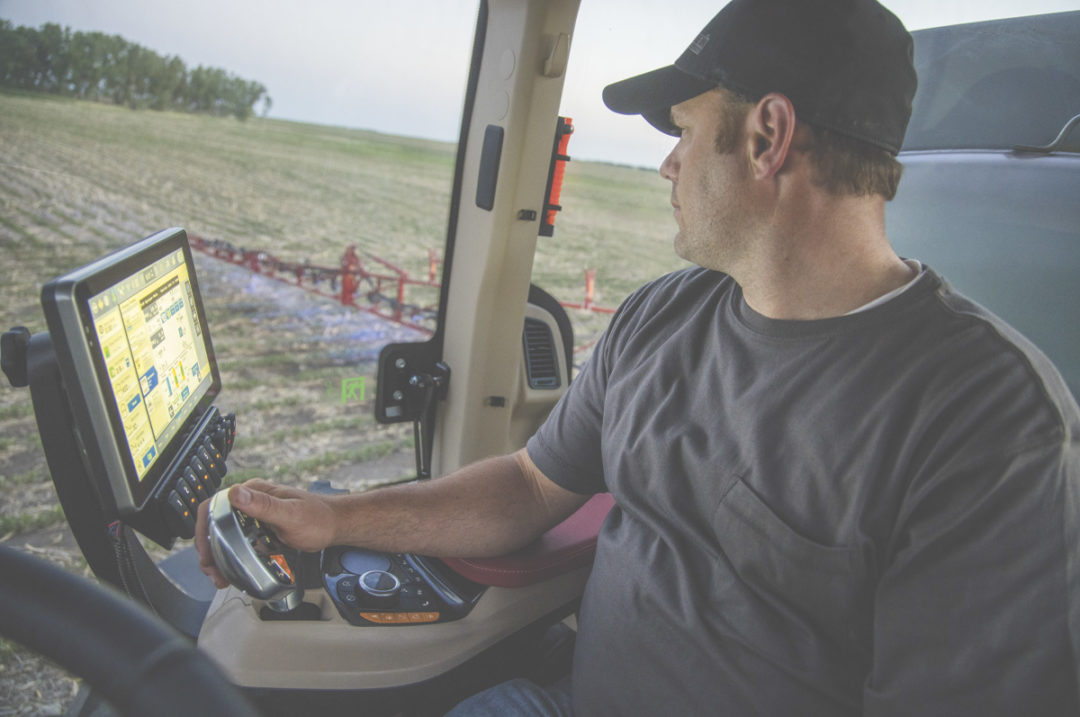Technology is literally driving the precise placement of seed, crop protection products and fertilizers, and its capabilities are increasing each year. From cameras that help guide machines down the row to nozzle control systems that prevent overlap, to the ability to troubleshoot and reset systems from miles away, technology is vital in all aspects of crop production.
Keeping machines in good working order has become routine for most farmers, ag retailers and custom operators. Annual preventative maintenance inspections conducted by trained machine and precision ag technicians – along with routine equipment service, maintenance and cleaning before storage – help ensure machines are ready to go to work the next season.
But how do you ensure the technology – the brain of the machine – is ready to go?
Safeguard controllers for winter
Controllers are no different than your laptop, tablet or flat-screen TV. You wouldn’t want them outside all winter, but the rest of the systems are built and designed for harsh conditions and typically have IP67 or greater ratings. Nodes on today’s equipment are potted and sealed, so there are not a lot of ways for moisture or grime to damage them.
To safeguard your controllers and on-board technology, follow the same end-of-season cleaning and storage prep practices you do for the machines.
- Keep things clean. Fertilizer is especially caustic if left clinging to equipment.
- Remove controllers or displays from the cab and store them inside during the winter rather than leaving them in the machine outside or in a cold storage shed.
- Discard all trash from inside the cab.
- Vacuum the interior.
- Inspect and replace cab air filters.
- Consider placing rodent bait or repellent to keep critters out. Rodents can play havoc with wiring, so keeping them out of equipment can save a lot of headaches.
Start early to ensure an 'all systems go' status
There are few things worse than loading a sprayer with an expensive product or a spreader with fertilizer, then finding out something on the machine is not working properly.
We get many calls in the spring and fall, especially about dry fertilizer, and the caller says, "The bin’s loaded, and we can’t get the fertilizer to run out." Then we ask if it ran before the bin was loaded, and no one ever knows.
So in addition to running the machine, the belts, the conveyors and blowers, we recommend putting several hundred gallons of water through sprayers to make sure everything is working before loading the applicator. Be sure to check all the technology on the machine at least two to three days before you go to the field – a month before is even better.
Check the control systems: Hardware and software
The same pre-season recommendations apply to firmware and the software that allow your control systems to work up to their potential – guidance and steering, variable-rate application, wireless communications, boom control, real-time weather records, data mapping, etc.
To make sure everything is working, take each piece of equipment back outside, let it find the GPS signal, start a job and run it. Get it out early to confirm it works and do a software check to be sure nothing is out of date.
Many technology providers update their software quarterly. With several different systems all tied into the same user interface, it is important to complete software updates regularly and systematically. This keeps everything at the same level and “talking.”
We have a lot of customers who update the display because that’s what they see in the cab, but they don’t necessarily update the back end – the nodes or electronic control units (ECUs) – that run the autoboom height control, the camera, the nozzle controls, etc.
It’s important to keep software current because when engineers release a new software version, they typically are not testing the new version on something that’s 10 versions old or on a single piece of equipment with a single component. They work within a range.
ISO is an incentive for updating software
The trend toward ISO compatibility also reinforces the need to update software, again to ensure all systems communicate.
At first, I was skeptical about the move to ISO compatibility, but it has really made our lives easier within our manufacturing division where we build pull-type liquid applicators, spreaders, anhydrous toolbars and fertilizer tenders. With ISO, it doesn’t matter what brand of tractor the equipment is hooked onto the information communication works.
I hope this information helps you get your operation off to a good start this spring, but if you need help or have questions, don’t hesitate to reach out to us. We have locations in Burley, Idaho; Great Falls, Montana; or Moses Lake, Washington.








